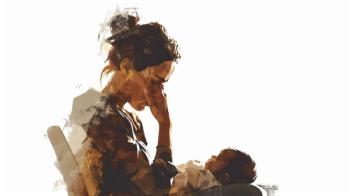
My Hijab, My Identity
Racism is here and happening all around us. One Muslim woman tells her story.
COMMENTARY
It was Friday afternoon and about to rain, but I still wanted to take a walk. I made a call to my inpatient unit and exchanged good wishes for the weekend with the charge nurse. When I came out and started walking, it was drizzling, but it quickly started raining heavily and thundering. As I did not want to walk in torrential rain, I turned back to hospital where I have been practicing as a psychiatrist for the past 14 years.
Going through the hallway, I saw a female staff member talking to the human rights officer. I thought I would share niceties with them, but before I could say anything, the staff member said, “I saw you cover your head.” At this, I became conscious of my hijab and tried to adjust it. She said, “No you do not need this, you are with your people.” Then she quickly put her hands on my head and removed my hijab—sudden and totally unexpected. I walked away a step or two and turned around to put my scarf back on. Then I went back to them and said, “It matters how I want to look, not how I look to you.” At this, she laughed and I left.
I came to my office and thought about it. I told myself that I had let go of these kind of incidents—but not this time. I did not want to take it with me to ruminate over the weekend. I would be part of the problem if I did not address it, so I went back and found the hospital human rights officer. I asked him what he thought of what happened. He said, “It was very disrespectful, and I could see you looked upset.” I told him it was in fact upsetting for me, but this was an opportunity to create awareness. He agreed and encouraged me to see the CEO.
While we waited in the office of the CEO, my supervisor showed up. After he learned what happened, he quickly apologized. Then he asked if I thought it was malicious. Sympathies tend to bring out emotions—still I managed to smile and said that I did not think it was malicious.
Two assistant chief operating officers and the human rights officer joined us in the office. They were shocked to hear what happened. It showed that all the race,
From my perspective, looking different is hard. While I find strength within myself to wear hijab, these responses are discouraging. I have faced incidents before where staff casually commented, “Stop wearing this” in the elevator and I had let it go. Real change comes when we address the real-life incidents and understand the real hurt they cause. Their sincere apologies and active listening were very encouraging, and enabled me to say what I said.
Another recent incident happened in the hospital where a Black female staff was asked if her hair was real. I found the response from my leadership very supportive, and their active listening reassured me. They neither rationalized the behavior nor provided any excuses. This is the kind of leadership that earns your trust and makes you want to come to work every day.
It is not surprising that incidents of
Next Monday morning, I received a call from Center of Expertise for Investigation. I was asked about my “headwear” incident and why it was disturbing for me. I again explained the significance hijab carries as part of my identity as a Muslim woman. Upon this, I was told the case will be sent to another department because I was a contracted employee.
As I was moving through this process, thinking over it again, I was no longer sure if the incident was not malicious.
Up till now, I was wearing hijab only when coming in and going out of the hospital. I did not wear it on inpatient units because I was afraid it would potentially be used as a weapon against me. After this incident with a staff member, I went to unit with my hijab on. I went to court to testify as an expert witness with my hijab on. Everyone has a role in creating awareness about
Racism is here and happening all around us. It takes a toll on our emotional and physical well-being. Unmanaged, racism takes the form of chronic stress and wears down our telomeres (which can accelerate aging), hastens cell senescence, and pushes us into disease-span. Chronic stress can change our behaviors and appetite. It can turn on pleasure seeking addictive pathways in our brain, making calorie dense food more rewarding. It slows our metabolism and stores fat around the abdominal area, leading to inflammation, insulin resistance, and obesity. Stress arousal interferes with our sleep and we constantly feel drained. Risk of depression, anxiety, and
Ignoring racism is not an option. Not after all the awareness that has been created at organizational and departmental levels with race, equity, and inclusion trainings. The time has come to address it practically as real-life events happen all around us.
Dr Nuzhat is an attending psychiatrist and assistant professor at Worcester Recovery Center and Hospital, UMass Chan Medical School.
Newsletter
Receive trusted psychiatric news, expert analysis, and clinical insights — subscribe today to support your practice and your patients.

















